Kaza – Ki – Kibber
The 7th day of our trip dawned bright and clear and we continued on our journey to Kaza, leaving the remote Pin valley behind. The road to Kaza backtracks to the confluence of Spiti and Pin rivers and then follows the Spiti river to reach Kaza. After the remoteness of the Pin Valley, Kaza appeared as a bustling town with a sizable market. It is the district HQ of Spiti and is the largest town and commercial center of the Spiti valley.

Situated at a height of 11,980 feet, Kaza is heavily influenced by Tibetan culture and is a good place to bargain hunt for Tibetan knick-knacks. A number of decent eating joints are available in the market serving authentic Tibetan cuisine and international dishes.
Due to high concentration of business within a limited area, the town, contrary to other Spiti towns is haphazardly built and a little dirty. To control vehicular pollution, the market area restricts commercial vehicle movement.

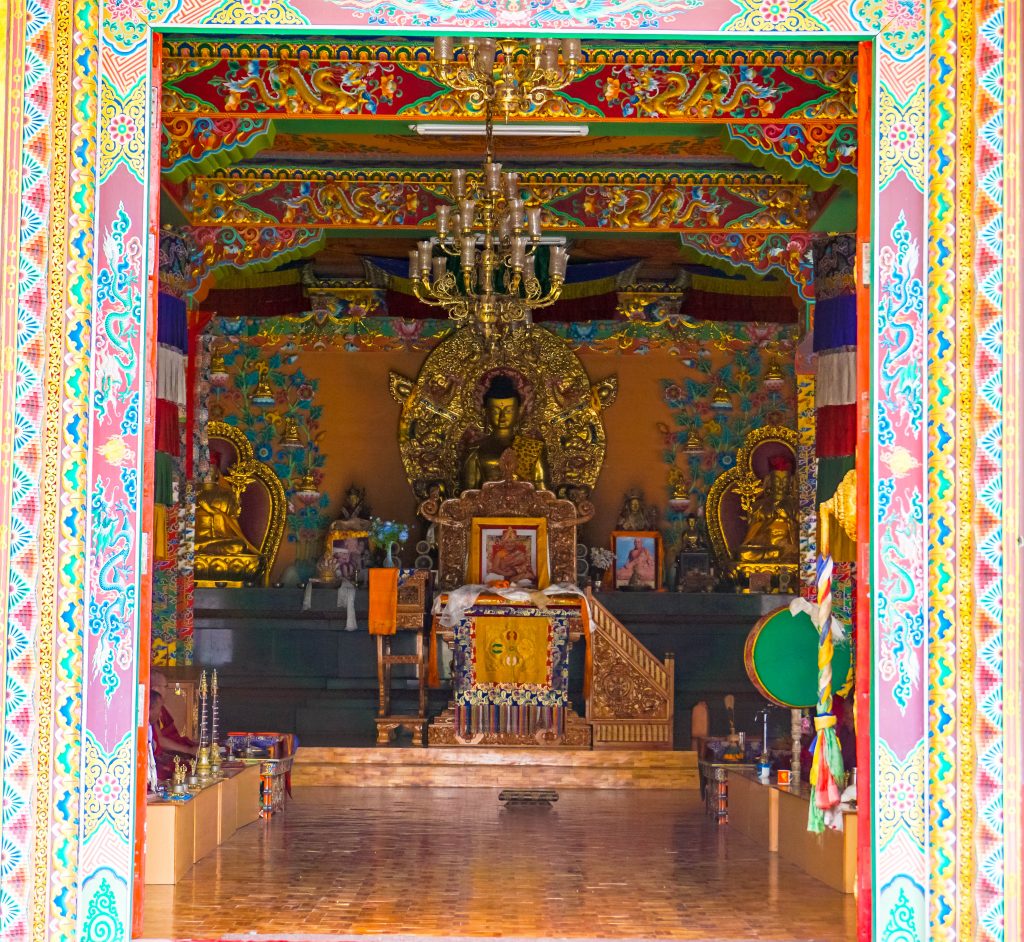
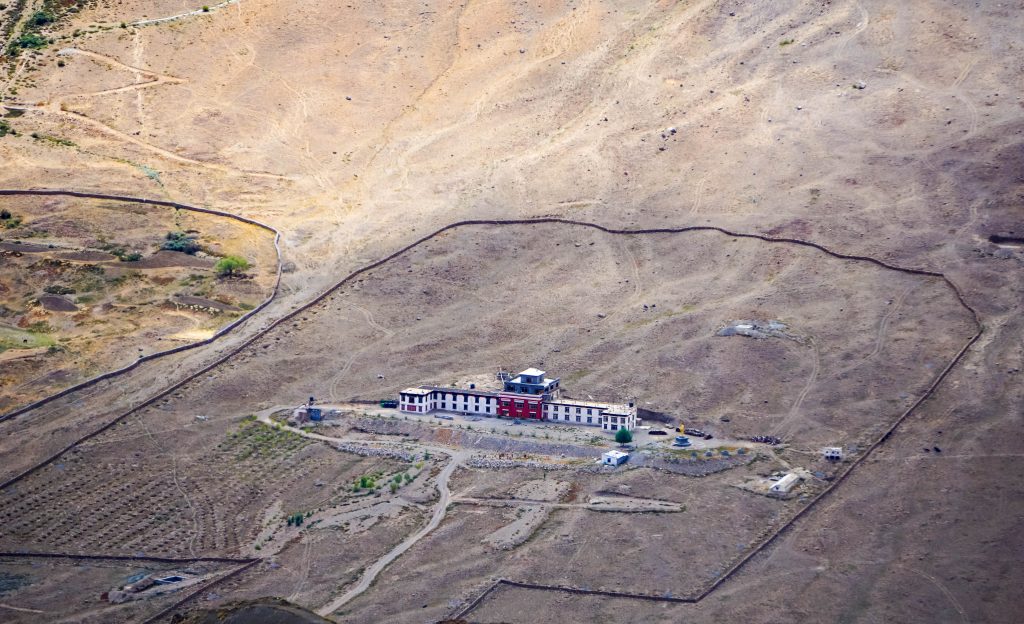
Within a radius of 20 kms from Kaza are the beautiful villages of Ki and Kibber. The road to Ki and Kibber villages meanders along the Spiti river and then starts its upward journey to reach a height of 13,500 feet.
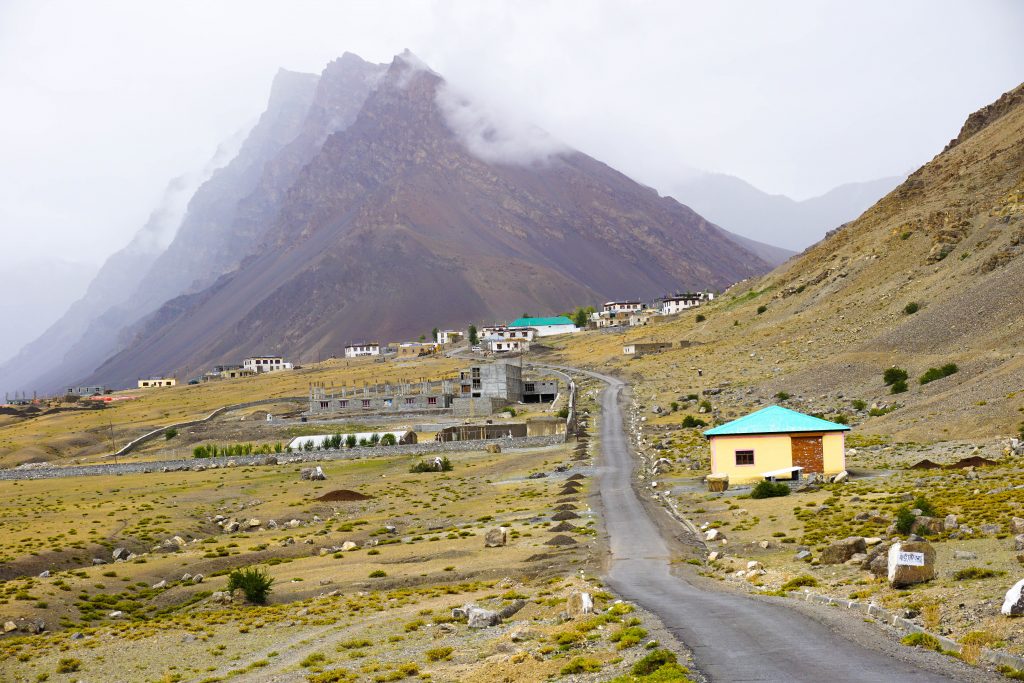
Surrounded by dark, bare hills, the Ki monastery appears like a jewel with its sparkling white facade spread over three stacked stories. Ki village situated at an altitude of 13,668 feet is famous for its monastery and along with the Tabo and Dhankar monasteries, it forms an important centre of learning for the Gelugpa sect.

Kibber village is situated about 16 kilometers from Kaza at a height of 14,200 feet. A small village of about 80 houses, its unique distinction is the fact that all houses here are made of stone instead of the traditional rammed earth technique found all across Spiti valley.

Langza – Komic – Hikkim
The second day of our stay at Kaza was given to exploring the off-beat places around it.
The first stop of the morning was Langza, a village with the beautiful Chau Chau Kang Nelda peak as its backdrop. A huge golden status of Buddha believed to be 1000 years old dominates the village. Langza is also well known for its rich fossil reserves. Millions of years ago, Spiti lay submerged under the Tethys sea and the fossils of the marine animals are found scattered close to the village.
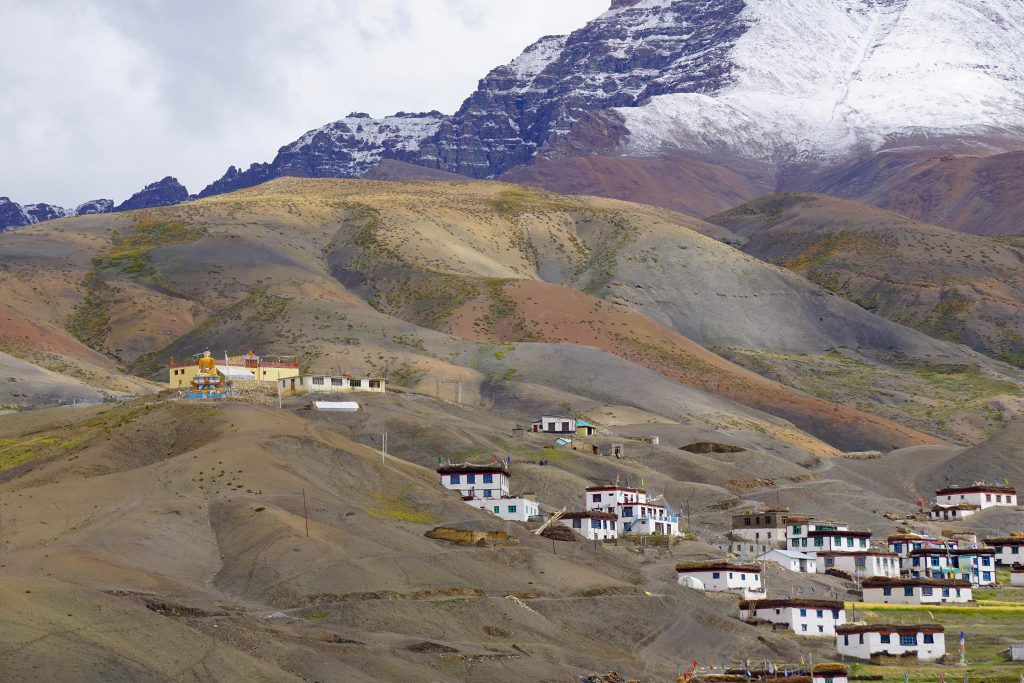
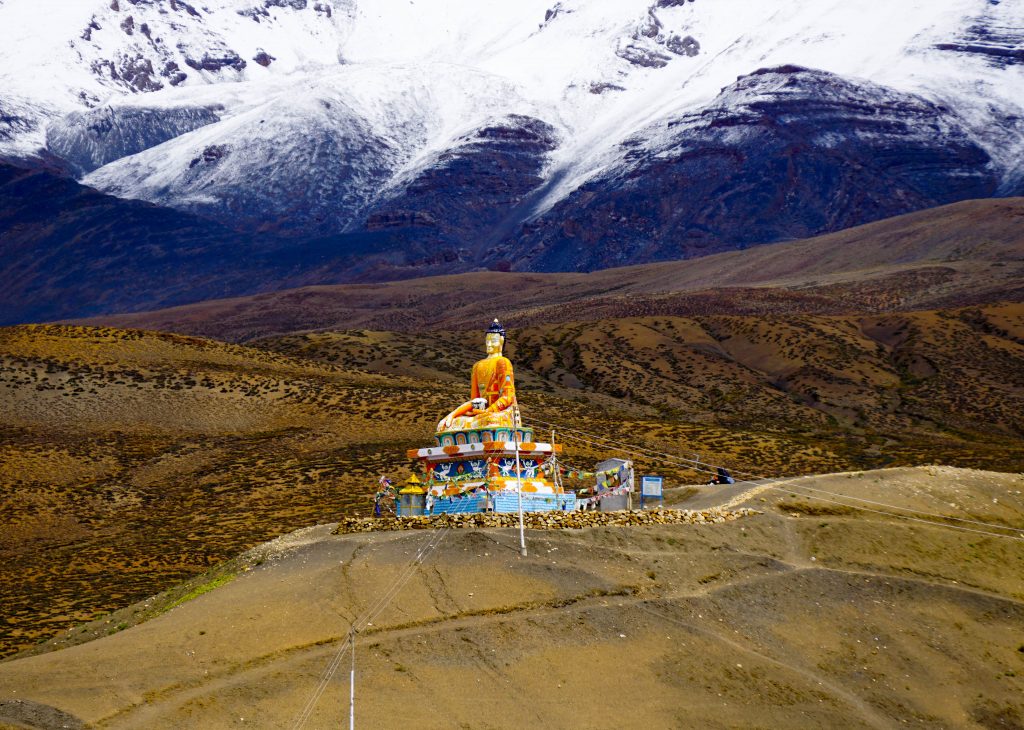
The next stop was Komic – the highest village in the world connected by a motor-able road as proclaimed by a HP PWD board in the village (this claim is suspect since there are villages in Peru and China which are situated at higher altitudes).
However, the Tanggyud monastery at Komic is indeed the highest monastery in the Spiti valley.
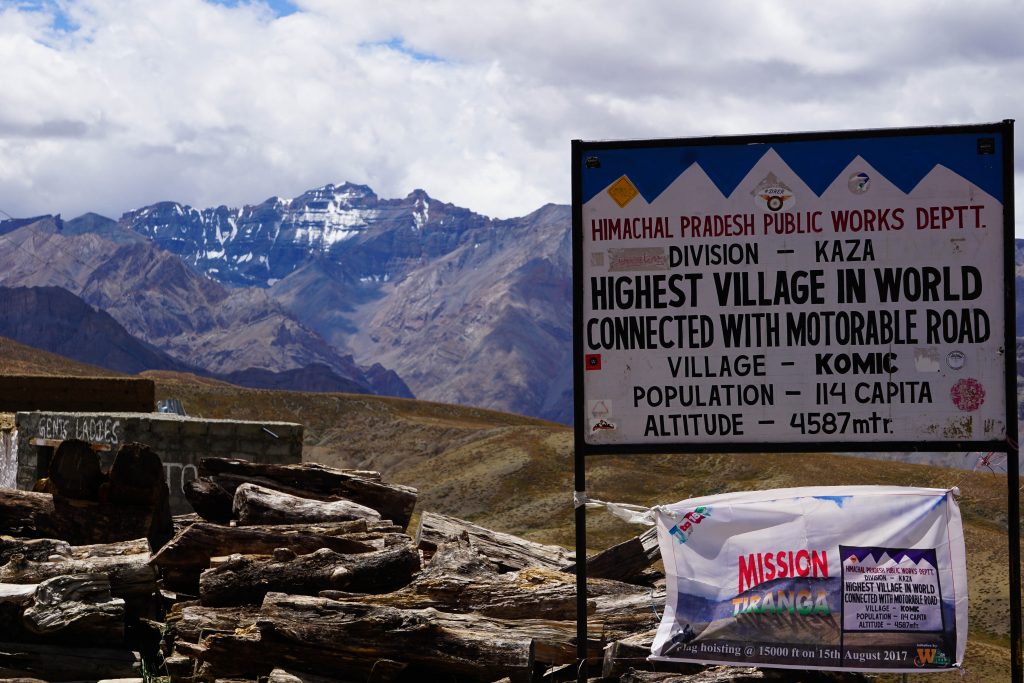
Komic is situated in a bowl shaped depression surrounded by tall peaks on all sides. Cultivation is restricted to the summer months only, for rest of the year the villagers depend on livestock farming and barter.
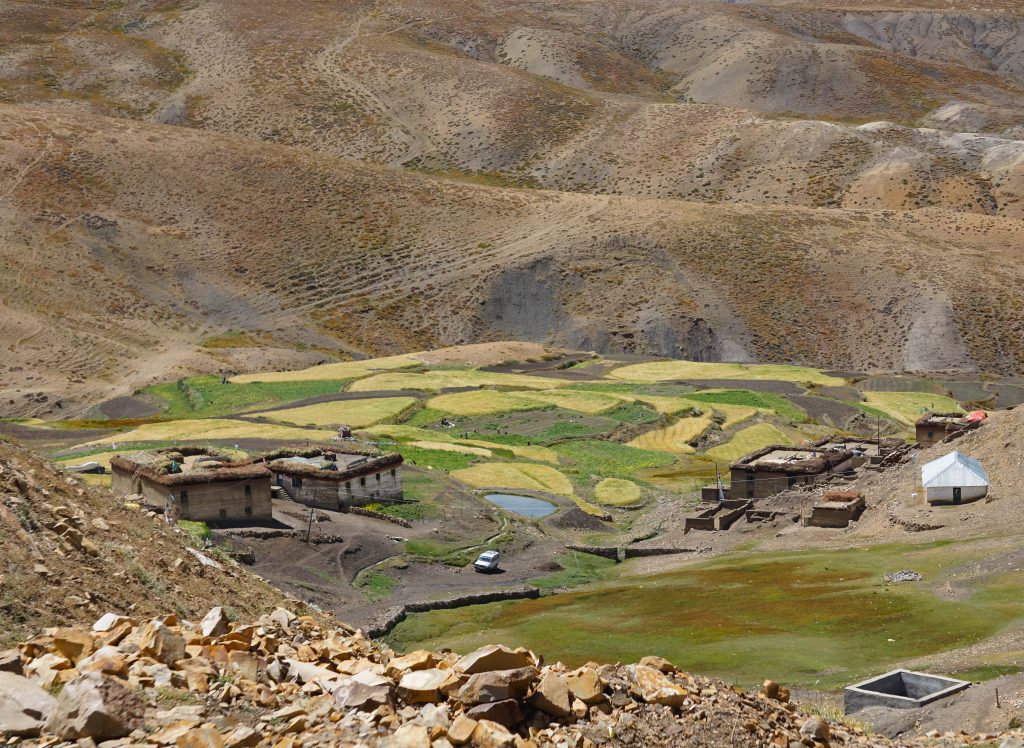
Another self -proclaimed record holder in Komic is the Spiti Organic Kitchen – an enterprising soul who has set up a restaurant in Komic selling the perennial favorites of the Spiti valley – butter tea and seabuckthorn tea.
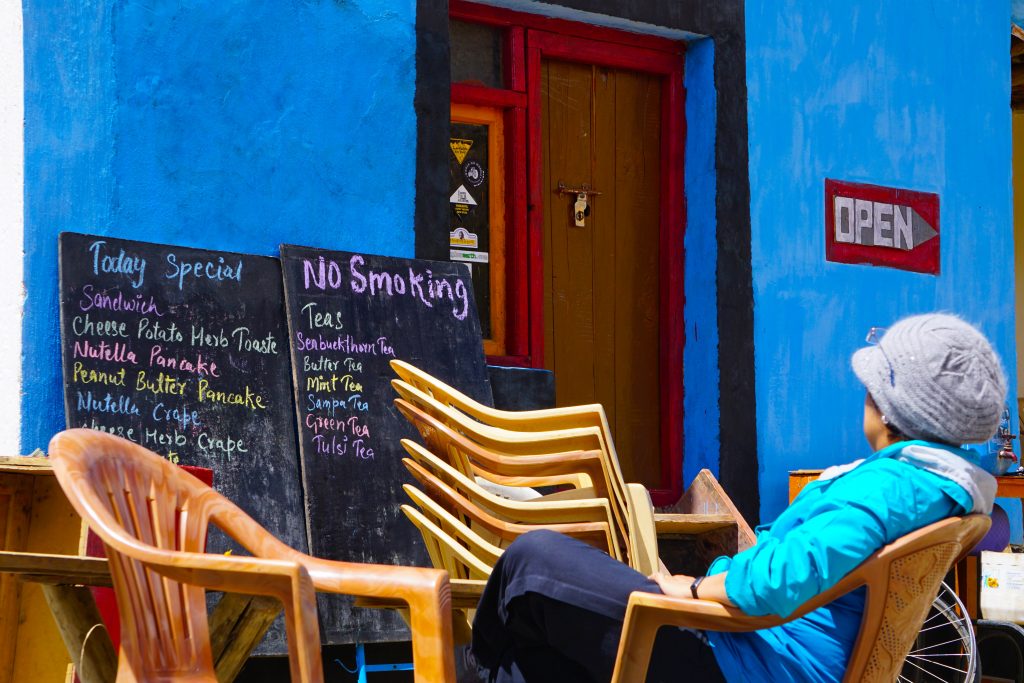
The next stop was Hikkim, a village whose claim to fame is its post office – supposedly the highest in the world. Again this clam is no longer valid since the China Post Office at Everest Base Camp located at an elevation of 17,060 feet is now the world’s highest post office.
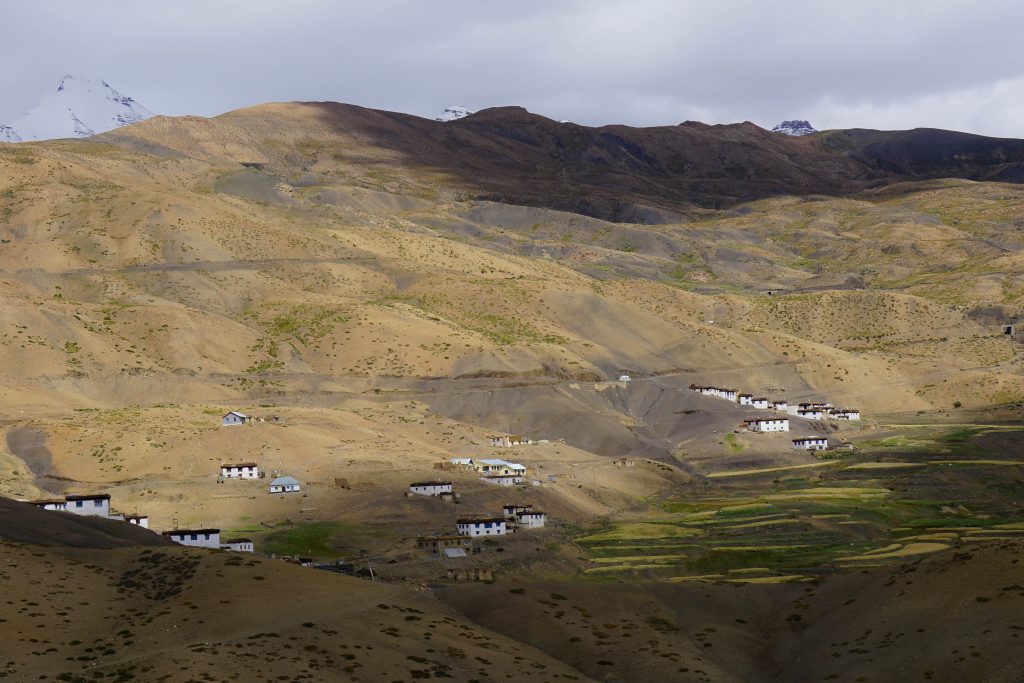
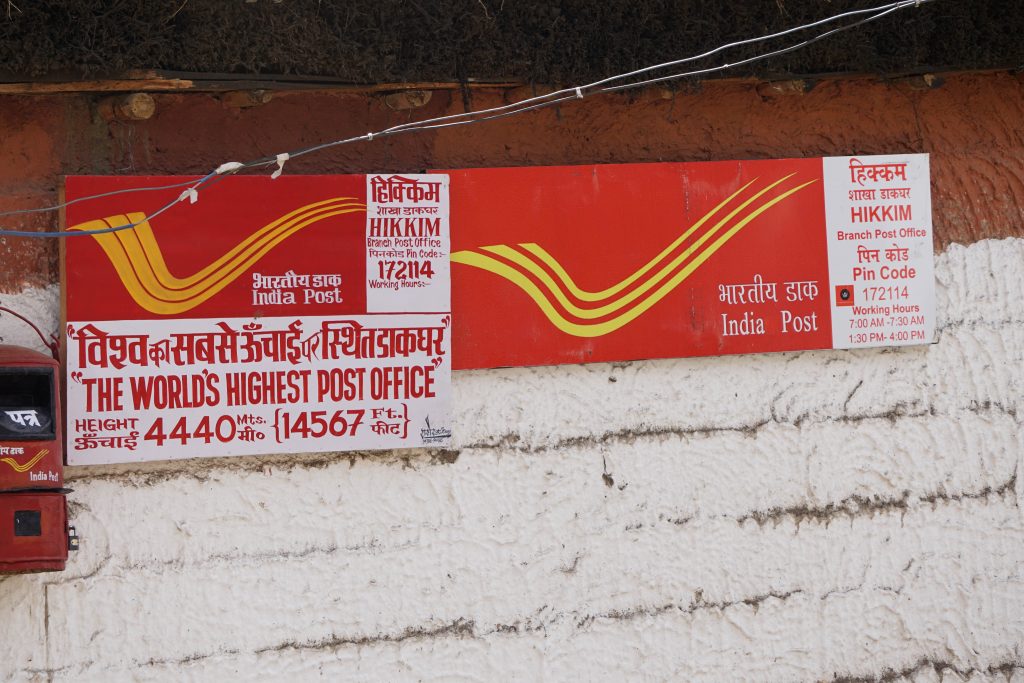
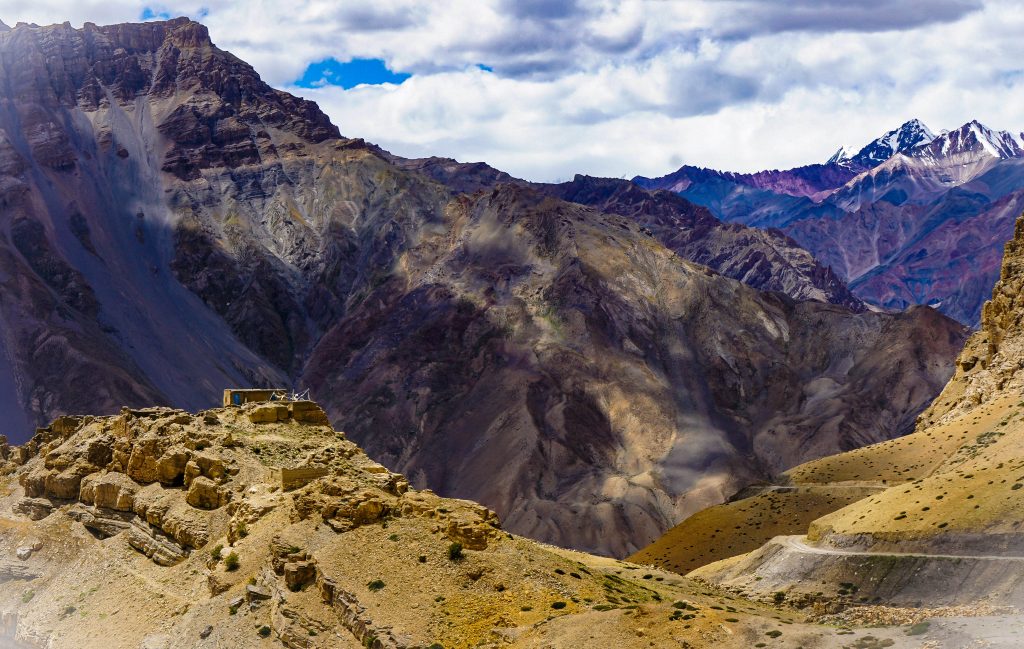
The high altitude and remote location of the Spiti valley support a sizeable population of Ibex, Himalayan Brown Bear, Musk Deer, Himalayan Blue Sheep, Snow Leopards. There are two important protected areas in the region – the Pin Valley National Park and Kibber Wildlife Sanctuary.
Though leopard sightings are rare, we were fortunate to come across a herd of Himalayan Blue Sheep (called Bharal) on our return journey from Hikkim.
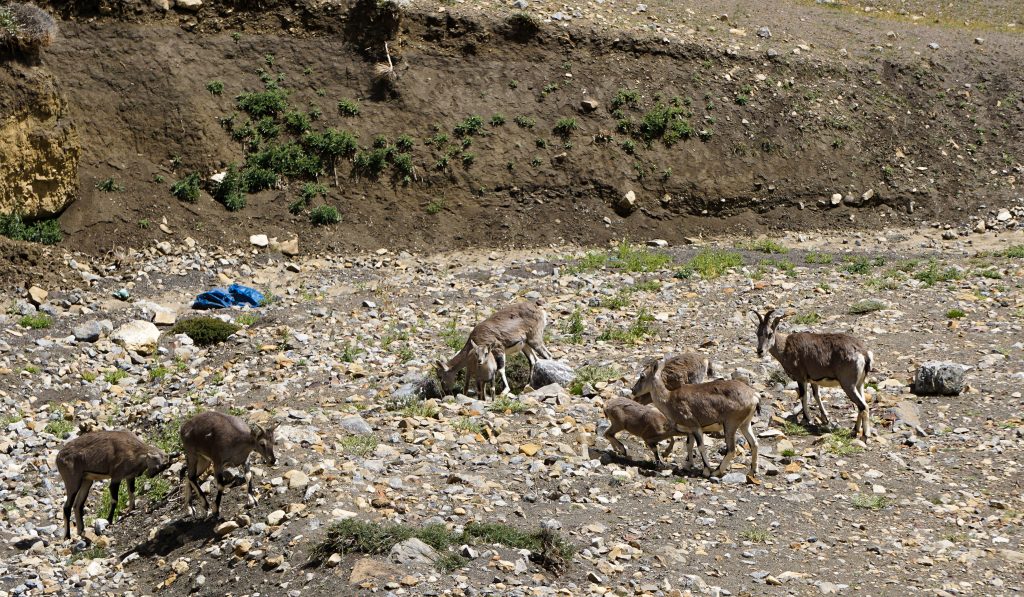
Related to goats, Bharals have short, dense coat of slate grey colour, sometimes with a bluish sheen (hence the name blue sheep). A full grown male Bharal may weigh 75 kgs and attain a height of 3.5 feet. They are primarily grazers and are experts in camouflage.

And the journey continued further to uncover the serene Chandrataal.
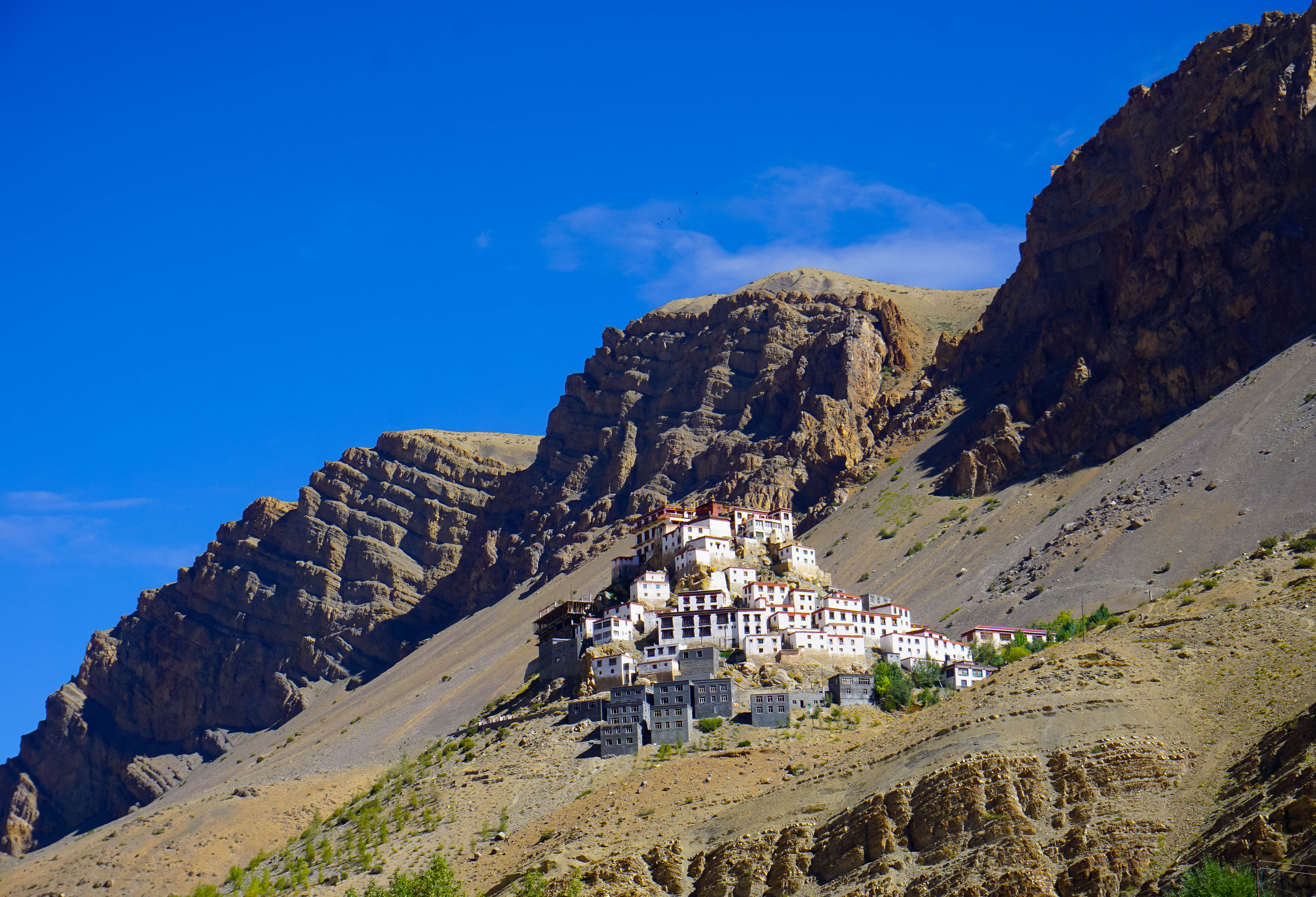
Amazing scenic beauty captured. Good information provided about the place.
Amazing Mahuya, beautifully taken pics, well thought through clicks. Really loved each and every highlight which you shared.
Captivating visuals with excellent narration! It was a pleasure to browse through the Footloose Rovers’ travelogues. Looking forward to your next!
Thanks dear, much appreciated.
Loved your comments, thanks very much.